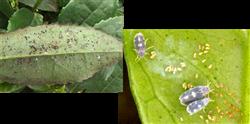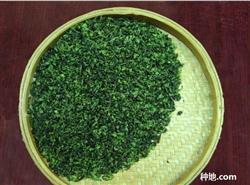What are the diseases in the root of tea?

What are the diseases in the root of tea? Please point out that there are the following diseases in tea roots: 1. Tea seedling white silk disease 1, 1 distribution and symptoms: tea seedling white silk disease is a common nursery root disease. The distribution is wide and the harm is serious. In addition to tea, it can also harm more than 200 kinds of plants, such as melons, Solanaceae, hemp, tobacco, peanuts and so on. Occurs in the root neck, the disease initially showed brown spots, the surface of the white woolly, after expansion around the root neck, shaped or white silk filamentous membrane, can expand to the soil surface. In the later stage, rapeseed sclerotia was formed in the disease, from white to yellowish brown to dark brown. Due to the pathogenicity of the pathogen, the cortex of the diseased plant rotted, the transport of water and nutrients was blocked, the leaves withered and fell off, and finally the whole plant died. 1. 2 pathogen: it is a kind of fungi of the subphylum Basidiomycetes. The mycelium is colorless at first, slightly brownish later, dense, forming sclerotia. The sclerotia is round, smooth, hard and dark brown. Vegetative forms, namely basidiospores and basidiospores, are produced under hot and humid conditions, but they are not common and have little effect on disease transmission. 1. 3 occurrence regularity: the sclerotia overwintered mainly in the soil or attached to the diseased tissue, and could survive for 5 to 6 years under dry conditions. At the turn of spring and summer in the following year, the hyphae germinated and produced when the temperature and humidity were suitable, which spread along the soil gap or spread with Rain Water, irrigation water, agricultural tools, etc., infecting the root neck of the seedlings. High temperature and high humidity are beneficial to the disease, which occurs most frequently from June to August. Heavy soil viscosity, excessive acidity, low-lying terrain, poor growth of tea seedlings, and the former as a susceptible parasite, the disease is also serious. 1. 4 Control methods: select wasteland or non-susceptible crops as nursery. Pay attention to the drainage of tea garden, improve the soil, promote the construction of seedlings and enhance disease resistance. The susceptible nursery should remove the diseased seedlings and disinfect the soil in time. The medicine uses 50% carbendazim 500 times solution, 0.5% copper sulfate solution or 70% methyl topiramate 500 times solution. The leaves of transplanted tea seedlings can be soaked in 20% lime water for disinfection. 2. Tea root cancer disease (compared with tea seedling blight) 2, 1 distribution and symptoms: mainly harmful to tea seedlings, occurred seriously in some tea areas, resulting in the death of tea seedlings. It is common in the cutting nursery, and both the main and lateral roots can be damaged. The bacteria invaded from the cutting mouth or root wound of the cuttings, producing light brown spherical protuberances at the initial stage, and then gradually enlarged like a tumor, small like millet grains, large like peas, and multiple tumors often healed into irregular large tumors. The tumor is brown, Lignified and hard, and the surface is rough. After the tea seedlings were damaged, the fibrous roots decreased, and the aboveground parts grew poorly or withered. 2. 2 pathogen: the pathogen of tea root cancer is Agrobacterium tumefaciens (S.et T.) Conn. The cell is short rod-shaped, with 1-3 polar flagella. Gray-white round colonies were formed on the common medium. The suitable temperature for development was 25-29 ℃, and the lethal temperature was 51 ℃ (10 minutes). The development is the best in pH7.3. 2. 3 occurrence regularity: root cancer bacteria overwintered in soil or diseased tissue. When the environment is suitable in the following year, the damage will be caused by water flow, underground insects and agricultural tools. Germs invade from the wound or incision of the seedling, grow and develop in the tissue, stimulate cell division and produce cancer. 2. 4 Control methods: strict seedling inspection, control of underground pests and reduction of root wounds. If necessary, the seedlings can be soaked in 20% lime water for 10 minutes before transplanting. 3. Distribution and symptoms of root-knot nematode disease of tea seedlings: mainly distributed in warm tea-producing areas. The disease is caused by a very small nematode. When the nematode invades the tea root, it forms a tumor in the root, which is similar to soybeans and rapeseed, and has different sizes, the damaged root has no fibrous root and is deformed, and sometimes the end of the root is thicker than the front end. The aboveground part of the diseased plant grows poorly, the plant is short, the growth is weak, the leaves turn yellow, and the leaves are easy to fall off and die in dry season. 3. 2 occurrence regularity: root-knot nematode is a kind of aerobic organism that likes high temperature and dryness. When the soil temperature reaches 25030 ℃ and the soil moisture is about 50%, the first generation can be completed in 20-30 days in sandy soil with high topography and loose soil structure, while nematode occurs more frequently in surface soil than in subsoil, and stops when it is below 10 ℃. 3. 3. Control methods: ① chooses wasteland as nursery, but should not be used as nursery if peanuts, melons, legumes, sweet potatoes and other crops have been planted. The soil should be turned deep in summer and turned again after 10 days in the sun, which can kill nematodes in the soil. ② should apply more phosphate and potassium fertilizer to the diseased seedlings and improve their disease resistance. At the same time, disinfecting with lime or applying 1:20 tea low water to the soil also has a better control effect. Click to get more tea planting techniques click to get more flower planting techniques
- Prev

How to control tea spiny whitefly?
How to control tea spiny whitefly? Please guide tea black whitefly to do obvious harm to tea buds and leaves. Generally, the nymphs of whitefly are found in the leaves of tea garden. most tea farmers do not know the adults of whitefly, and the intake of a large number of adults directly affects the quality and yield of tea production. ...
- Next

What kinds of tea do you have?
What kinds of tea do you have? Please guide us that there are many kinds of tea, among which China has the most. At present, there is no unified method for tea classification, and there are different classification methods according to different standards. According to the method and quality, the primary tea is divided into green tea, yellow tea, black tea, green tea and green tea according to the oxidation degree of tea polyphenols.
Related
- Fuxing push coffee new agricultural production and marketing class: lack of small-scale processing plants
- Jujube rice field leisure farm deep ploughing Yilan for five years to create a space for organic food and play
- Nongyu Farm-A trial of organic papaya for brave women with advanced technology
- Four points for attention in the prevention and control of diseases and insect pests of edible fungi
- How to add nutrient solution to Edible Fungi
- Is there any good way to control edible fungus mites?
- Open Inoculation Technology of Edible Fungi
- Is there any clever way to use fertilizer for edible fungus in winter?
- What agents are used to kill the pathogens of edible fungi in the mushroom shed?
- Rapid drying of Edible Fungi

